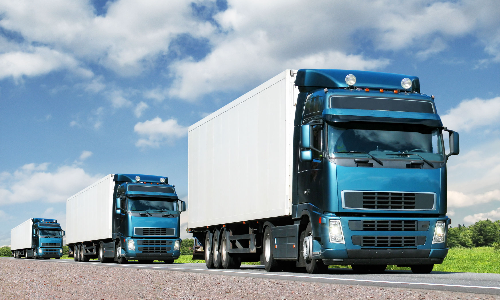

 [罗戈导读]Social and business trends have a big influence on the food supply chain. Changes in shopping behaviour can force retailers to rethink their business models and networks.
[罗戈导读]Social and business trends have a big influence on the food supply chain. Changes in shopping behaviour can force retailers to rethink their business models and networks.

Social and business trends have a big influence on the food supply chain. Changes in shopping behaviour can force retailers to rethink their business models and networks.
One of the most obvious visible changes is the growing number of smaller shops, such as convenience stores. Compared to hypermarkets and supermarkets, these shops have a smaller footprint and selective assortments.
This doesn’t only affect the store but also the operations inside the retailer’s distribution centre (DC) because of changing order profiles and, for example, the need for multiple replenishment shifts every day.
With increasing urbanisation, congestion issues could also influence future logistics operations. Combined with environmental awareness, future legislation might change. This will lead to the limiting of accessibility to certain parts of the city. Therefore, forecasting demand and efficient logistics operations from the warehouse through transport to multi-format stores has become even more important.


With greater concentration of business around cities, food retailers should ask themselves where to locate their DCs. For example, should they be close to the city centre but at the expense of higher investments per footprint?
Or does it make sense to select a logistics hub area with good infrastructure but also with the risk that, given today’s labour scarcity, building and maintaining a solid workforce could become a challenge. And potentially a risk for both operational and business growth.
Another trend is the growth of online shopping. After general merchandise and fashion, the share of online purchases of groceries is also growing. Retailers are looking for ways to optimise their business models, including the ‘last mile’ operation.
In-store or dedicated pick-up points and home delivery options are all different ways to serve consumers. Special e-com hubs have been created within the new supply chain network to support direct delivery to consumers.
Next to the more visible developments, logistics operations behind the scenes are undergoing changes. Some retailers use dedicated e-com DCs, while others apply the picking of orders in their existing stores instead.
The level of automation also varies. Whereas some purely e-com players rely on a manual operation with DCs (that can be up and running in a short timeframe), others decide to invest in mechanised fulfilment centres at strategic locations. They may also decide to integrate their e-com operations within the DCs for store delivery – at so-called ‘omni-channel’ DCs.
It’s difficult to tell which strategy will be the most successful. However, those retailers that are able to adapt fast-paced technological developments for their benefit will have a competitive edge.
This will require an ability to apply automated solutions in such a way that you remain flexible, both in terms of growth as well as in changing requirements and retail networks (e.g. store formats). The use of collaborative robot solutions can offer such benefits because with their growing experience and capabilities, it’s relatively easy to upgrade robotics to the latest technology.
The availability of more data and the ability to predictively analyse this, can also bring big opportunities for optimising the logistics process. A better understanding of real-time demand and, for example, actual stock positions can bring efficiencies to the overall supply chain.
However, this will also bring new challenges because DCs will have to process orders in a shorter timeframe. This explains the higher levels of automation and search for less fixed infrastructure-based solutions by using, for example, AGVs.
Technology-wise, there are many options to choose from. To what level you need to automate the operational process in your DC depends on many different aspects, ranging from your current experience with technology to your position in the supply chain and what, for example, your suppliers and customers are doing in this area.
A phased approach might, therefore, be beneficial and this topic will be discussed in one of our next blogs, including some examples of how this can work in an actual operation.

UPS卖掉货运后,FedEx也考虑剥离货运,全球公路货运寒冬?
4932 阅读
41页PPT深度解读京东物流一体化供应链模式!
1503 阅读
8家快递被曝有一半“向上取整”!快递违规收费全清单!
1464 阅读京东物流智狼机器人跑向全国!拣货最快秒级
1290 阅读DPD英国与Yeep!达成战略合作 将新增8000个自提柜
1049 阅读实用且干货的仓库选仓技巧
974 阅读马士基与沙特邮政建立战略合作伙伴关系
945 阅读抖音电商:“茂名荔枝”订单量增长超过21倍
895 阅读杨兴运带队,兴满城市合伙人走进满帮!
928 阅读京东发布自研无人轻卡,注册无人物流商标?刘强东深入汽车圈了?菜鸟、顺丰、京东无人物流车哪家强?
848 阅读